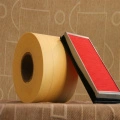Inside the Next-Gen Fuel Filter Paper Supply Chain
I’ve walked more filter plants than I can count, and—honestly—the humble media is where reliability begins. In this case, the origin is Second Buliding and Studying No21 shiji street, Handan, Hebei China. What’s changed lately? Two things: resin chemistry and composite layering. Both are re-shaping how Fuel Filter Paper balances efficiency, dust-holding, and fuel/water separation for diesel, gasoline, and biodiesel blends.

What it’s made of (and why it matters)
Base media is cellulose or cellulose composited with melt-blown layers. Impregnation can be acrylic acid (non-cured) for flexible pleating or phenolic resin (cured) for higher thermal/chemical stability. Widths range from 46 mm to 1650 mm—handy for everything from motorcycle cartridges to high-flow truck elements. In practice, many customers say phenolic-cured grades stay flatter in humid depots; acrylic grades pleat more easily and reduce cracking. Trade-offs, as always.

Spec snapshot (typical values, real-world use may vary)
| Media construction | Cellulose / Cellulose + melt-blown composite |
| Impregnation | Acrylic (non-cured) or phenolic (cured) |
| Basis weight | ≈120–190 g/m² |
| Thickness | ≈0.35–0.75 mm |
| Filtration rating | 10–25 µm (β10 ≥ 200 typical per ISO 19438) |
| Burst strength (wet) | ≥250 kPa |
| Permeability | ≈200–500 L/m²·s |
| Roll width | 46–1650 mm |
| Water separation | ≥95% per SAE J1488 (diesel), media-dependent |

Process flow & testing
Fuel Filter Paper production: fiber blending → wet formation → resin impregnation → drying/curing → calendering → corrugation/pleating trials → slitting. QC follows ISO 19438 and ISO 4020 methods; water separation checked to SAE J1488. Typical lab data: 99.2% efficiency @ 10 µm; Δp rise ≈18 kPa at 300 L/h; dust holding ≈18 g per 100 cm² media (ISO test dust), to be honest that’s solid for midweight grades.
Applications, life, and field notes
Use cases: heavy-duty trucks, ag tractors, gensets, marine diesels, small engines, and common-rail systems sensitive to water. Service life: around 10,000–30,000 km in light vehicles; 500–1,000 hours in off-road—heavily dependent on fuel cleanliness and water load. Many fleet managers tell me phenolic-cured Fuel Filter Paper resists biodiesel swelling better, especially B20 in humid regions.

Customization options
Custom basis weight, pore size, resin type (acrylic vs phenolic), composite melt-blown layers for coalescence, widths, roll length, core IDs, and brand printing. Certifications typically include ISO 9001 and IATF 16949; RoHS/REACH compliance on request.
Vendor landscape (quick comparison)
| Vendor | Width range | Certifications | Lead time | Water sep. (SAE J1488) | Approx. price/m² |
|---|---|---|---|---|---|
| Hebei supplier (this product) | 46–1650 mm | ISO 9001, IATF 16949 | ≈2–4 weeks | ≈95–98% | Mid |
| Vendor A (EU) | 100–1600 mm | ISO 9001, IATF 16949 | ≈3–6 weeks | ≈96–99% | High |
| Vendor B (APAC) | 50–1500 mm | ISO 9001 | ≈2–5 weeks | ≈90–95% | Low–Mid |
Two quick case notes
– Construction fleet (Tier-3/4 diesels): switching to composite Fuel Filter Paper cut injector returns by 23% quarter-over-quarter; water-related alarms dropped after adding coalescing layer.
– Marine generators: phenolic-cured media pushed service intervals from ≈600 to ≈850 hours (calm-water duty), with dP growth more gradual.

Standards and paperwork checklist
Ask for ISO 19438/ISO 4020 test reports, SAE J1488 water-separation data, MSDS for resin systems, and IATF 16949 certificate. If you run high-ethanol or biodiesel, verify compatibility and swelling tests—sounds basic, but it saves headaches.
References: [1] ISO 19438 Diesel fuel filters—Multi-pass test; [2] ISO 4020 Fuel filter test methods; [3] SAE J1488 Water separation test; [4] IATF 16949 Automotive QMS.
Hebei Fangyu Filter Material Technology Co.,Ltd is the leading innovative developer and manufacturer all kinds of filter materials in China.pocket filter media factory Located in the economically developed Handan Hebei specialized in various kinds of filter materials from Synthetic Media,Paint stop Filter Media Pre- filter Non Woven Fabric ,Wire Mesh Backed Laminated Filter Media,Ceiling filter Auto Cabin Filter Media, polypropylene filter media, Glass Microfiber Filter Media Nonwoven Fabric,Pre- filter non woven fabric, activated carbon filter materials, EN779 bag filter materials, HEPA filter media, air filter HEPA filter media and Filter Accessories.Our filter materials have passed ISO9001:2000 quality certification since 2005.Certified by ISO9001, UL2 and SGS, with emphasis on quality and service. Our strength is the ability to find innovative ways to meet marketplace or product requirements.activated filter media price|super blog